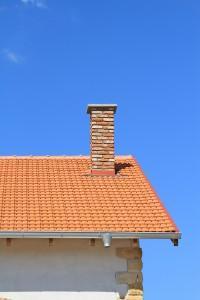A chimney is more than a large spout that ejects smoke from a home in Newton Ma. It’s considered the backbone of the fireplace system in your house. Without it, it’s hard for other components that are linked to it to function properly. This is why careful deliberation about maintenance, repairs, and inspections must be done to keep it operating efficiently. Hiring a trusted network of tradesmen who are experts in performing these services will help you with the upkeep for your residence.
It’s important to remember that not everyone is qualified to work on a complex chimney system. Keep in mind it’s definitely not your typical do-it-yourself project because it can be messy and requires lots of climbing. Professional contractors are fit to reach in places that are difficult to see and get to without the right kind of equipment. Experience tradesmen understand the potential dangers that are a part of servicing chimneys and will be careful not to put you or themselves in harm’s way. If you’re ready to make a move towards securing chimney repair or maintenance solutions, check out the main parts of this component that need special attention.
Chimney Cap
Caps on chimneys are essential for preserving these features. They’re responsible for covering the top of a chimney in a way that turns it away from the wind to ensure the emission of smoke. It also helps keep rain and snow from getting inside the chimney. Not having a well-fitted cap means allowing water to run inside your chimney and leaving it open for birds and other small animals to clog it with nests and debris. Routine maintenance and chimney repair services will keep the uppermost part of it in satisfactory condition and help it resist rust or other damaging effects.
Chimney Flue
The flue is an opening that holds and transports combustion from the furnace, heater, cooler, and fireplace to the outdoors. It’s extremely important for this part to work correctly because if it’s overworked, acidic flue gases can eventually eat away at the insides of a chimney. If this goes unchecked for too long, heat transfers and blends rapidly with surrounding combustibles. As a result, deadly carbon monoxide will leak inside the house.
Chimney Crown
Crowns are designed to hang away from the chimney’s opening as a way to stop water from running down its sides. Like caps, they prevent several outdoor components from affecting the chimney’s system. Crowns must be tended to regularly since they can develop cracks when worn down which creates undesirable instances of water infiltration and debris clogging.
Chimney Liner
It’s also necessary to inspect and fix chimney liners which help guide the combustion by-products out of the chimney and away from the surrounding areas. Defective liners can cause gas buildup that can wreak havoc on a household’s interior space. Keep in mind that many older houses weren’t built with liners, as these components only started being incorporated into chimneys after the 1940s. Homeowners with older homes are expected to get liners installed and receive routine check-ups to make sure they remain in great shape.
Chimney Masonry
Your chimney’s brickwork is an invaluable part of its functionality and aesthetic appeal. Restoration services are available if the bricks become unaligned or start to crumble due to exposure to excess moisture from flue gases. It’s best to consult with a seasoned chimney repair contractor today if you notice your chimney’s bricks jutting out of place or undesirable gaps in the layout. If maintained properly, beautiful masonry can last up to a century. Being proactive about your chimney’s needs is the key to prolonging its lifespan.
